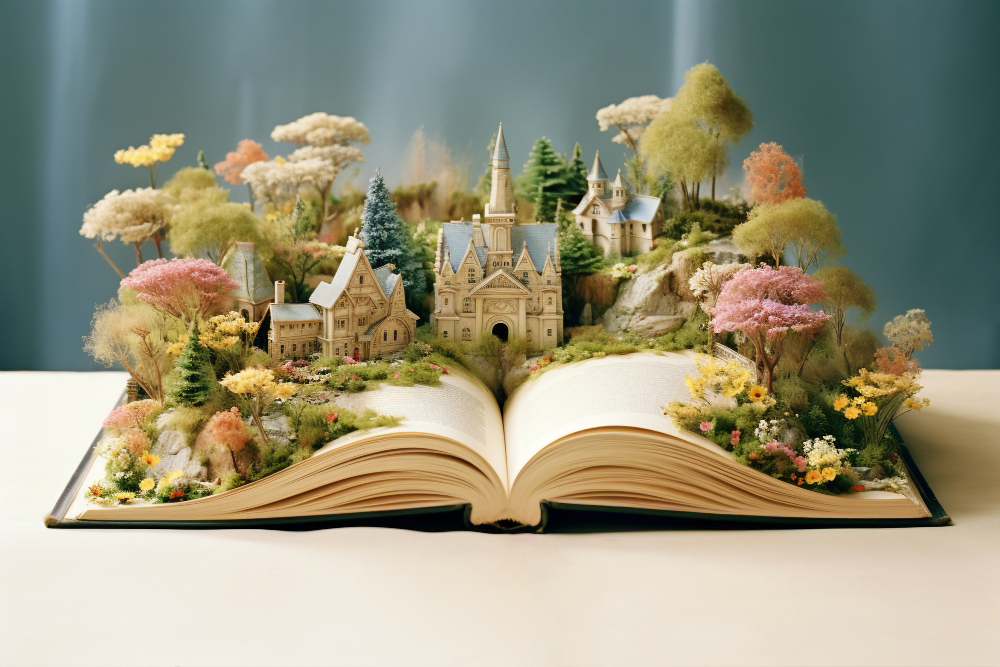Introduction: From Campfires to Cloud Servers
Once upon a time, storytelling lived around the fire. It was oral, communal, intimate—a circle of faces illuminated by flame, hanging on every word. Today, our campfires are glowing screens, our audiences scattered across continents, and our stories travel not by memory but by megabytes.
Storytelling hasn’t died in the digital age—it has exploded, splintered, mutated. From Instagram stories that vanish in 24 hours to sprawling cinematic universes, from podcasts to VR games, we live in a time where everybody is telling a story and everybody is an audience.
But as algorithms, artificial intelligence, and immersive technologies reshape the way we create and consume narratives, one question lingers: Where is storytelling headed next?
Chapter 1: The Digital Renaissance of Storytelling
The digital age didn’t just change how stories are told; it democratized who gets to tell them.
- From Gatekeepers to Global Platforms
Once, publishing a novel or producing a film required passing through the gatekeepers of publishers and studios. Today, a teenager with a smartphone can reach millions through TikTok, Wattpad, or YouTube. Storytelling is no longer the privilege of the few—it’s the playground of the many. - Shorter, Faster, everywhere
The rise of platforms like Instagram, Twitter (X), and Snapchat has shrunk attention spans and compressed narratives. A story can unfold in 280 characters or a 10-second clip. While some lament this brevity, others see it as evolution—a haiku-like challenge to distil meaning. - Interactive & Participatory
Stories aren’t just consumed; they’re co-created. Fanfiction, comment threads, duets on TikTok—audiences aren’t passive anymore. They remix, parody, extend, and sometimes even outperform the original creators.
We’re living in a digital renaissance, where storytelling is both deeply personal and endlessly scalable.
Chapter 2: The Rise of Transmedia Narratives
Think about the Marvel Cinematic Universe. Or Harry Potter sprawling across books, films, theme parks, and fanfiction. Or even K-pop, where music videos, games, and behind-the-scenes vlogs weave into a single story tapestry.
This is transmedia storytelling—narratives spread across multiple platforms, each piece adding to the whole.
In the digital age:
- A book becomes a podcast.
- A podcast becomes a Netflix series.
- A Netflix series spawns memes, fan theories, and TikTok that themselves become part of the narrative culture.
Stories are no longer linear; they’re ecosystems. The future will demand storytellers who think not in chapters but in universes.
Chapter 3: AI and the Algorithmic Storyteller
Artificial intelligence is no longer science fiction—it’s writing it. From AI-generated short stories to personalized bedtime tales for children, algorithms are stepping into the storyteller’s chair.
- Personalized Storytelling
Imagine opening a book and having it change based on your mood, interests, or reading history. AI can craft stories that feel tailor-made, blurring the line between fiction and experience. - Challenges of Authenticity
But here’s the catch: stories built on data lack the lived messiness of human experience. They’re clever but often soulless. Can algorithms ever replicate heartbreak, joy, or nostalgia? Or will they always be mimicry without memory? - Opportunity for Writers
Rather than competition, AI may become a co-writer—handling structure, grammar, and drafts, while humans focus on voice, creativity, and emotional truth. The future storyteller may not reject AI, but orchestrate it.
Chapter 4: Immersive Storytelling—VR, AR & Beyond
The campfire circle was immersive. The stage play was immersive. But virtual reality and augmented reality bring immersion to an entirely new level.
- VR Storytelling
Strap on a headset, and you’re not watching the story—you’re in it. Imagine stepping into a novel, walking through its streets, talking to its characters. Storytelling here isn’t just narrative; it’s world-building you can inhabit. - AR Storytelling
Augmented reality overlays stories onto the real world. Think Pokémon Go but with myths, histories, or personal memories layered onto your neighborhood streets. Your city becomes a living storybook. - The Future Audience
In immersive storytelling, the audience isn’t passive—they’re participants, sometimes even protagonists. The storyteller’s role shifts from narrator to architect, designing experiences instead of just words.
Chapter 5: The Economics of Attention
In the digital age, attention is currency. Stories compete with endless scrolls, pings, and notifications. This changes not just form but strategy.
- Snackable Stories
Brands and creators increasingly rely on short, viral-friendly narratives—memes, reels, snippets—that capture attention before it drifts. - Binge Narratives
At the same time, platforms like Netflix thrive on the opposite: long-form stories designed for binge consumption, hooking audiences for hours. - Algorithm as Gatekeeper
Stories rise or sink based on algorithms—recommendation engines decide whether your story is discovered or buried. Writers must now consider not just narrative arcs but SEO keywords, hashtags, and click-through rates.
This economic reality reshapes storytelling into both art and strategy.
Chapter 6: Community as Story
Here’s a twist: in the digital age, the community itself becomes the story.
- Fandoms as Co-Creators
Look at BTS’s ARMY, or Marvel fan theories. The collective conversation often becomes as compelling as the original work. - Interactive Narratives in Gaming
Games like Fortnite or Minecraft aren’t just entertainment—they’re collaborative worlds where millions co-author the story in real time. - Micro-Communities on Social Media
Subreddits, Discord servers, and niche TikTok communities create their own narratives, inside jokes, and mythologies.
The future of storytelling is as much about building communities as it is about crafting plots.
Chapter 7: The Ethics of Digital Storytelling
As powerful as digital storytelling is, it carries ethical weight.
- Deepfakes & Manipulation
AI-generated videos and voices blur reality. How do we trust stories when technology can fabricate them flawlessly? - Data as Story
When platforms track our every click, they build narratives about us—narratives we don’t control. Who owns your digital story—you or the algorithm? - Representation & Inclusion
Digital storytelling must grapple with diversity. Whose stories get amplified? Whose voices remain in the shadows? The future must fight for inclusivity, or risk repeating old imbalances in shiny new forms.
Chapter 8: The Return of Authenticity
Ironically, as storytelling becomes more digital, many audiences crave authenticity.
- The Rise of Podcasts
Podcasts are booming precisely because they feel raw, intimate, like eavesdropping on a conversation. - Handmade in a Digital World
Personal newsletters, vlogs, and Sub stack essays thrive because they cut through the noise with unpolished honesty. - The Human Advantage
No matter how advanced AI becomes, it cannot replicate lived experience. Audiences will always hunger for stories that feel human.
Chapter 9: Storytelling as Identity
In the digital age, we don’t just consume stories—we perform them. Instagram feeds, LinkedIn bios, Tinder profiles—these are curated narratives of self.
Future storytelling won’t just be about books or films—it’ll be about how each of us authors our digital identity. We are all storytellers now, constantly writing our own mythologies in real time.
Chapter 10: The Next Frontier—Storytelling Without Borders
The future of storytelling isn’t just digital—it’s global.
- Language Barriers Crumbling
AI-powered translation means a story written in Hindi can reach someone in Brazil instantly. Stories are no longer bound by geography. - Cultural Cross-Pollination
Digital platforms blend cultures, genres, and traditions, creating hybrid stories that defy categorization. K-dramas inspire Latin American telenovelas. African Afrofuturism sparks Hollywood interest. Storytelling becomes a dialogue across borders.
Conclusion: The Future Is Hybrid
So, what is the future of storytelling in the digital age? It isn’t a single path but a mosaic:
- AI-powered yet human-led.
- Short and snackable, yet also vast and binge-worthy.
- Immersive worlds and intimate confessions.
- Stories told by creators, brands, algorithms, and communities alike.
But one thing hasn’t changed. Whether around a campfire, on a page, or in a VR headset, storytelling remains our way of making sense of the world. It’s how we pass on wisdom, share emotions, and imagine futures.
The tools may evolve, but the impulse is eternal. The future of storytelling is not the death of tradition—it’s the amplification of humanity in ever-new forms.
Because no matter how digital the age becomes, we will always crave the magic of the words: Once upon a time…

